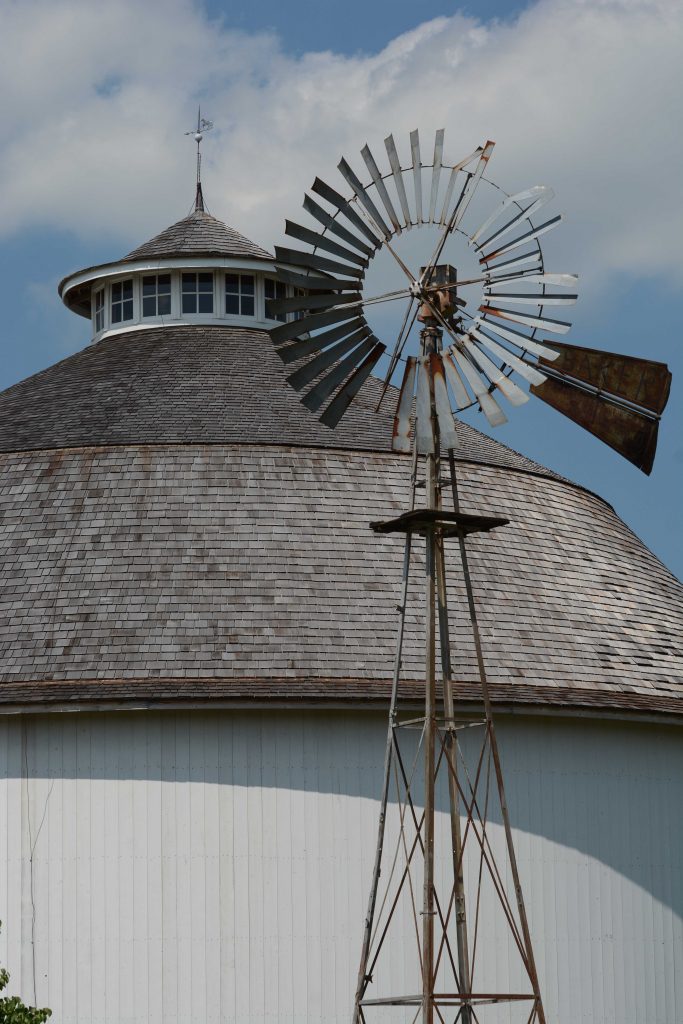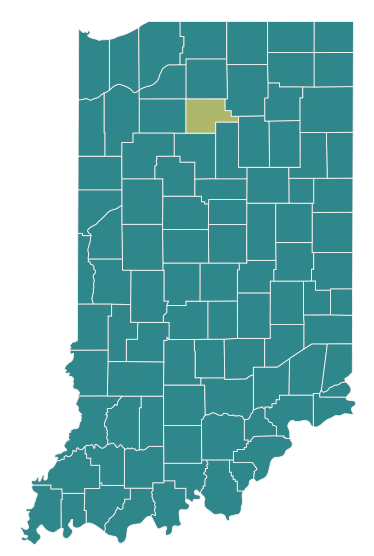
The frugal farmers of Fulton County cut corners building their barns a century ago — literally. The barns they built were round. In doing so, the northcentral Indiana county became known as the “Round Barn Capital of the World.” The county’s appreciation and preservation of its special marks in history make the county special, too.

Even though the landlubber county is mostly farmland, it’s named for Robert Fulton — the American inventor who first gave us working steamboats, submarines and torpedoes. But in a nod to Fulton’s inventiveness, a group of Fulton County farmers embraced round barns, touted at the time for their modern engineering and scientific application that improved farm efficiency. Round barns put more area under roof while using less building materials than traditional rectangular barns.
From the late 1800s into the 1930s, round barns were built across the Midwest. At one time, Indiana had about 225 of them, more than any state, and Fulton County, with 17 round barns, had more than any other Hoosier county.
Fulton County also holds an unheralded but likely lofty position in the state when it comes to engineering and manipulating natural resources. Lake Manitou, which today covers 775 acres southeast of Rochester, is one of the oldest manmade lakes in Indiana, if not the oldest. The lake was created in 1827 by the federal government to power a mill for the Potawatomi Indian village there as part of a treaty.
After the tribe’s forced removal from Indiana in 1838, the dam, mill and village fell into disrepair. In the early 1900s, the lake found new life as a gathering place. Today Manitou remains a magnet for water and other outdoor recreation and a place to enjoy nature and wildlife.
The removal of the Potawatomi to Kansas, a 660-mile march known as “The Trail of Death,” started just north of Fulton County and passed through. It’s a dark chapter of history but is also one county residents have been in the forefront of researching and commemorating. A Fulton County Eagle Scout placed the first historical marker along the trail in the county in 1976. Now, more than 80 markers, placed mostly by scouts and civic groups, trace its route across four states. One last one is being placed this spring in western Fulton County. The annual Trail of Courage Living History Festival each September at the county historical grounds also commemorates the event.
County Facts
Founded: 1836
Named for: Robert Fulton, American Inventor & Engineer
Population: 20,059 (2017)
County seat: Rochester
Event
Redbud Trail Rendezvous
April 27-28 | Admission: $3 adults
Fulton County Historical Society Grounds
U.S. 31 and Fulton County Road 375 N.
www.fultoncountyhistory.org
Celebrate the first meetings of French fur traders with Native Americans in what became Fulton County along the Tippecanoe River as the redbuds bloom. The festival features foods cooked over wood fires, programs, blanket traders and merchants, traditional craft demonstrations, pre-1836 reenactors and a Civil War encampment.



